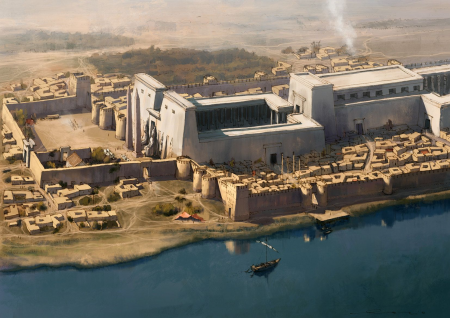Miforan Empire: Difference between revisions
No edit summary |
m DBWiki moved page Mifora Empire to Miforan Empire |
(No difference)
| |
Revision as of 21:02, 13 June 2022
The largest political entity since the Kasarian Conflict. It lasted for about eight centuries before collapsing under its own weight.
History

When Kasar repatriated its armies, a new reality took shape. Some of the then existing countries had been hit much harder than others, several lost their entire armies whereas others did not. It’s no surprise that it didn’t take long for certain people to take a chance.
Sutrek was a small nation of little consequence along the Vius river. Kasar had paid them little attention beyond levying them like all others. But one man among the conclave of rulers saw an opportunity. Paneg Sevso lead their army, reinforced to more than double its size by mercenaries, and conquered their neighbor to the north; Sinabes. So swift was their victory that they hardly lost any troops at all and in a campaign as bold as it was risky soon conquered two more neighbors.
There have been many rumors about this first expansion; some claimed Sevso found a dragon’s hoard to pay for his mercenaries, others said he killed whoever found the dragon’s hoard to take it as his own. Then there were those who were convinced he had either Elven or Kasarian support. The truth is, as often, lost to history.
Sevso then had a number of his peers on the conclave murdered and cowed the remaining ones into naming him sole ruler. To further cement this change he moved the capital of the new nation to the city of Mifora on the coast of the Sarodin Sea.
Twelve years later, another campaign saw more nations fall to his armies. Forty years later it was his son, Avale, who extended the realm to the Tal river and conquered the city of Hegio, renamed it after himself, and crowned himself emperor.
But it was Avale’s daughter, Tullia, who built the actual empire. She realized that it was impossible to conquer more territory and pacify it with the empire’s armies who were already a huge drain on the realm’s coffers. Instead, she made voluntarily joining the empire a worthwhile proposition. The empire’s advances in culture and technology would be freely shared with those who would join and they would not be taxed more than the home provinces.
Shrewdly, she also made joining the army a career to be aspired to. Soldiers were paid a wage higher than most tradesmen, treated well, and guaranteed a grant of land at the end of their twenty-year service. The army was quickly reorganized and set to show those who didn’t think joining was a good idea how wrong they were.
It was less than a century later that the empire extended all the way to the Carpelo mountains. To the south, the large nation of Otteun had always resisted and their highly trained armies were considered too costly to engage. However, with no access to the north (and pressure from the elves, it is whispered) they finally negotiated a treaty that made them a mostly independent province within the empire, with the city of Midtal being named second capital.
About six centuries after the founding of the empire their attention turned east to what they had always considered inferior lands and conquered Sormark, growing the empire to its largest size.
The end came surprisingly quickly for the empire. The seven children of Empress Ateia decided that centuries of fratricide wasn’t for them and they were going to rule together, dividing the provinces among them. The huge reorganization necessary caused an economic collapse and a number of their own children proved to be quite ambitious and were happy to commit patricide and matricide to gain the imperial throne. Anarchy reigned and the once mighty empire fell into numerous smaller states.
Legacy
About five centuries after the founding, emperor Lydus Evodi dictated the “One Empire“ directive. In short this meant that the only ‘true’ culture within the empire was Miforan culture and any other was no longer allowed and should be actively purged.
Up to then most of the conquered provinces had usually adopted much of Miforan culture already but some of their old customs and art existed next to the new. Now it was illegal to own or create works of art deemed ‘un-Miforan’. During his fifty-two-year reign Lydus went to war on anything he felt was ‘foreign’ and many painting and books were burned, statues smashed and, in certain cases, whole buildings destroyed. One entire city was razed as he considered it an affront to Miforan sensibilities.
After his death the directive was never officially rescinded but it was not actively enforced either. Still, many had become afraid of what might possibly happen again and the original cultures never fully recovered.